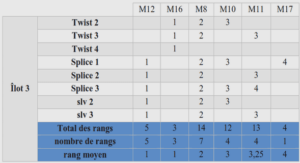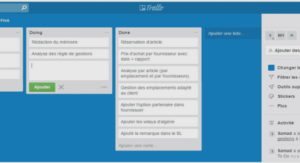Analysis of the failure micro-mechanisms
Damage mechanisms leading to ductile failure are generally described in terms of void nucleation, void growth and finally void linkage that form cracks. An extensive review of ductile fracture mechanisms can be found in Garrison and Moody (1987, [63]). Observation and characterization of damage mechanisms is traditionally done by means of optical and Scanning Electron microscopy. This destructive approach only gives access to two-dimensional information. High resolution tomography and laminography are now increasingly used for non-destructive three-dimensional observation of damage in metallic materials (e.g. Morgeneyer et al, 2008, [128]; Maire et al., 2012, [117]). In this Chapter, attention is limited to studying the mechanisms leading to ductile failure under biaxial tension, i.e. plane stress states between uniaxial tension and equi- biaxial tension. A series of interrupted tensile experiments is performed on specimens extracted from TRIP780 steel sheets. A specimen with a central hole is used to study uniaxial tension, while notched flat specimens cover intermediate stress states in the vicinity of plane strain tension. In addition, interrupted punch experiments are performed to investigate the failure mechanism under equi-biaxial tension. Micrographs of specimens corresponding to different stages of loading prior to failure are analyzed in view of void nucleation and growth as well as localization of plastic deformation at the grain level. The experimental observations suggest that shear band formation is the governing failure mechanism under biaxial tension.
Tensile experiments are performed on flat notched specimens (Fig. 6-1a). Specimens are 20mm wide in the shoulder area and feature a minimum width of 10mm at the center. The notch radius is R=6.65mm. Experiments are carried out under displacement control at a constant crosshead velocity of 0.5mm/min. Planar Digital Image Correlation (2D-DIC) is used to measure the relative displacement of the specimen boundaries and the displacement field at the center of the gage section. The measured force-displacement curve is depicted in black in Fig 6-2a. A force maximum is reached before fracture occurs, roughly corresponding to the instant of the onset of through-the-thickness necking. Beyond the onset of necking, steep gradients in the stress and strain fields develop both in-plane and through-the-thickness at the center of the specimen gage section (Fig. 6-3). The plane stress condition prevail up to the onset of through-thickness necking. Thereafter, a stress in specimen thickness direction builds up. The corresponding plots of the estimated loading paths at the specimen center, i.e. the evolution of the equivalent plastic strain as a function of the stress triaxiality and the Lode angle parameter, therefore show a pronounced kink associated with necking followed by an increase in stress triaxiality and a decrease in the Lode angle parameter (Fig. 6-4). The reader is referred to Dunand and Mohr (2010, [48]) for more details on the numerical model.
In addition to the monotonic experiment all the way to fracture, the experiment is repeated for additional specimens, but interrupted prior to fracture at different stages of deformation: maximum of force; 95% and 99% of the displacement at which fracture initiates. Due to the excellent repeatability of the experiments for the material at hand, the corresponding force-displacement curves lie on top of each other (Fig. 6-2a). The end points of the interrupted experiments are therefore highlighted by a triangle symbol in Fig. 6-2a and 6-4. In close analogy with the experimental program on the notched tension specimen, experiments are performed on a tensile specimen with a central hole (Fig. 6-1b). The hole has a diameter of 8mm while the ligaments to the left and right of the hole are each 6mm wide. Following exactly the same procedure as for the notched specimen, a monotonic experiment is performed all the way to fracture, followed by a series of The cracks are assumed to initiate near the boundary of the central hole. The corresponding finite element simulation shows that through-thickness necking occurs in the hole ligaments, with the strongest thickness reduction of up to 38% at a distance of 0.9mm from the hole boundary. The evolution of the stress state at an integration point located at the specimen mid-plane near the hole boundary is shown in Fig. 6-4. Due to the proximity to the hole boundary, the stress state remains close to uniaxial tension all the way to fracture, i.e. the stress triaxiality and Lode angle parameter are close to 0.33 and 1.0, respectively. Selected views of the deformed FEA mesh at the instant of onset of fracture are shown in Fig. 6-5 with a contour plot of the axial plastic strain.



